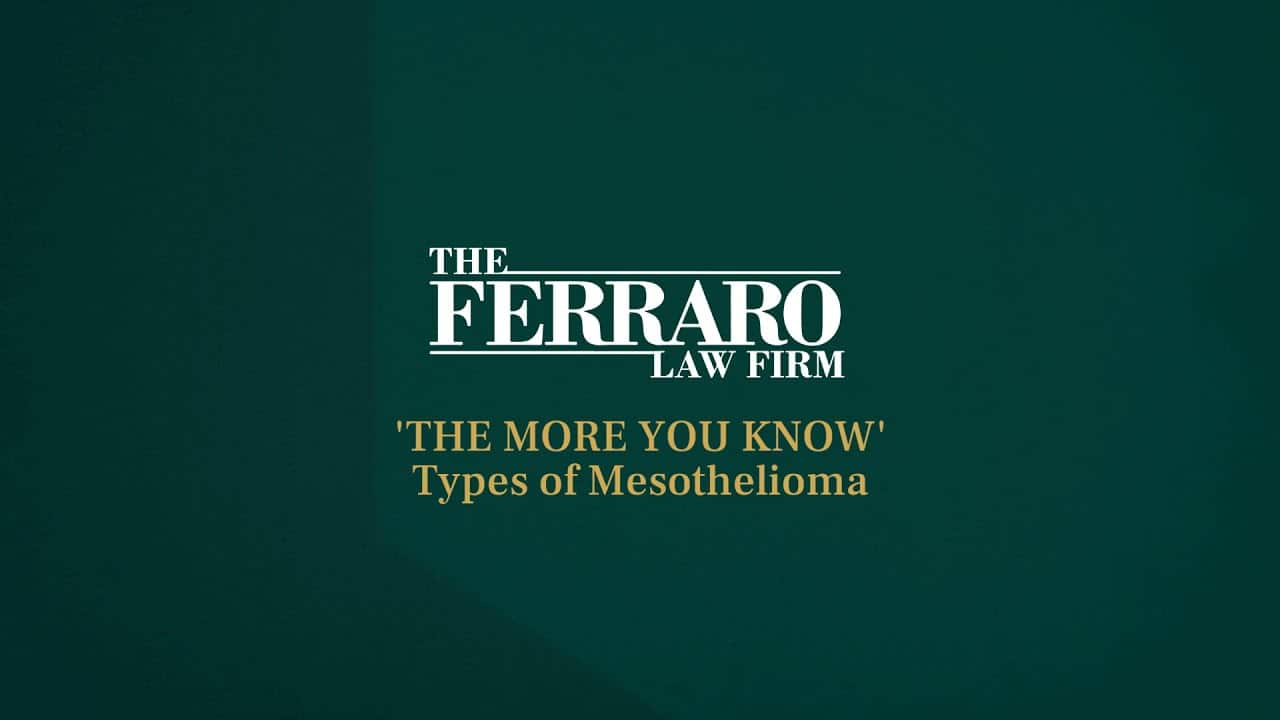If you were seriously injured, remember that it is crucial to choose the right law firm to represent your interests. We have been doing this for more than three decades, and have the resources you need to challenge any opponent.
Can Asbestos Exposure Cause Lung Cancer?
Each year, thousands of Americans die as a result of exposure to asbestos, and those in certain industries—particularly Navy, construction, power plant, and railway workers—may be at a higher risk. Though asbestos has been associated with an increased risk of lung cancer for decades, it can also cause other lung conditions and diseases like asbestosis. In this article, we explain more about the various harms that asbestos exposure can cause, as well as the options available if you or a loved one has been diagnosed with lung disease or lung cancer after occupational exposure to asbestos.
Table of Contents
Asbestos-Related Lung Disease
One of the most common asbestos-related lung diseases is asbestosis, a condition caused by inhaling asbestos fibers, which scars the lungs. And unfortunately, those who develop asbestosis as a result of asbestos exposure can also be at a higher risk of asbestos-related lung cancers.
Some symptoms of asbestosis include:
- Shortness of breath
- A dry cough that persists for months or years
- Weight loss caused by loss of appetite
- Widening and rounding of the fingers and toes (clubbing)
- Chest pain or chest tightness
Although the damage to one’s lungs due to long periods of asbestos exposure can be serious, there are options available to lessen your symptoms and improve comfort. And if you or a loved one has been diagnosed with asbestosis, you may be entitled to compensation.
Asbestos-Related Lung Cancers
Who is at risk of lung cancer due to asbestos exposure?
Exposure to asbestos can often occur during the demolition or remodeling of older houses or buildings, many of which used asbestos insulation, floor tiles, cement, and other asbestos-containing products. Those who work in certain occupations are at a higher risk of asbestos exposure, including:
- Power plant workers
- Navy workers
- Shipyard workers
- Railroad workers
- Assembly workers
- Electrical workers
- Maintenance workers
- Auto mechanic workers
Because asbestos is naturally corrosion-resistant and flame-retardant, it was an incredibly popular building material for decades. However, asbestos is no longer produced or used in the U.S., and it hasn’t been used in construction since the mid-1970s.
How asbestos causes lung cancer
Cancer develops when cells are genetically damaged, causing out-of-control growth. As tumors form, cancer cells can spread to other parts of the body through the lymph nodes. When someone inhales enough asbestos fibers to cause chronic lung irritation, these fibers can damage the cells enough to cause them to become cancerous.
Most asbestos-related lung cancers will begin to form between 15 and 35 years after exposure began. The level of asbestos exposure can also determine when cancer will develop; heavy exposure generally causes cancer to develop sooner, while those who had light exposure near the beginning of their career may not develop cancer for decades.
Some risk factors of asbestos-related lung cancers include:
- The length and level of asbestos exposure
- Genetic risk of cancer (especially lung cancer)
- History of smoking or tobacco use
- Weight, blood pressure, and overall health
For those who have a history of asbestos exposure and smoke (or smoked in the past), the risk of lung cancer can increase significantly. Smoking reduces the ability of one’s lungs to filter asbestos fibers, which can increase the impact these fibers have on lung health. If you’re a smoker or former smoker who has been exposed to asbestos and diagnosed with lung cancer, you may be entitled to financial damages.
Understanding Asbestos-Related Lung Cancers
Although lung cancer is the second most common type of cancer in the U.S. (and the leading cause of cancer-related deaths), relatively few cases of lung cancer occur due to asbestos exposure. However, lung cancer is so common that asbestos-related lung cancers on their own are responsible for about 6,000 deaths each year.
The symptoms of asbestos-related lung cancers are similar to those of asbestosis. They include:
- Chest pain
- Shortness of breath
- Chronic cough
- Coughing up blood
- Unintended and unexpected weight loss
- Excessive fatigue
Types of asbestos-related lung cancers: pleural mesothelioma and asbestos lung cancer
Mesothelioma is the most well-known type of asbestos-related lung cancer; however, it’s not the only type. Plural mesothelioma is a type of lung cancer that develops in the mesothelium—the lining of the lungs. Mesothelioma is caused only by asbestos exposure, while lung cancer may be caused by asbestos exposure, tobacco use, radon exposure, or some combination of multiple factors.
Asbestos lung cancer develops inside the lung rather than in the mesothelium. Often, cancer with asbestosis may be detected, which is one reason it’s so important for those with asbestosis to see a pulmonologist regularly for screenings and lung function tests.
Both mesothelioma and asbestos lung cancer can take decades to develop. However, once cancer cells can be detected, it may be a short time before they metastasize or spread to other parts of the body, making treatment more challenging.
Treatment Options for Asbestos-Related Lung Cancers
Unfortunately, the lung damage caused by asbestos can’t be reversed. However, if lung cancer or mesothelioma is detected early, there are treatment options that can limit the spread of cancer and improve your quality of life. These include:
- Surgery (including a lung transplant)
- Radiation
- Chemotherapy
- Targeted gene therapies
Some mesothelioma and lung cancer sufferers aren’t diagnosed with the disease until it has spread enough to cause noticeable symptoms. For those whose lung cancer isn’t detected until after it spreads to the lymph nodes or other organs, treatment options will be focused not only on targeting the cancer, but also on reducing pain and providing comfort. Certain types of radiation may slow tumor growth, while prescription pain medications and breathing treatments may help you remain mobile and maintain your quality of life.
Frequently Asked Questions: Mesothelioma & Asbestos
How long do asbestos fibers stay in the air?
I was exposed to asbestos—should I be worried?
Our Asbestos Lawyers Can Help You Fight Back
The Ferraro Law Firm has helped injured people stand up to asbestos manufacturers and large employers for decades. Large construction companies and manufacturers often try to hide behind their legal teams when those injured by their products or policies stand up to them. Few law firms have the skills and resources that it takes to challenge these corporations: but The Ferraro Law Firm does.
For over 30 years, our asbestos attorneys have helped consumers seek justice against corporations for manufacturing asbestos or allowing workers to be exposed to asbestos without appropriate protective equipment. They are prepared to do the same for you. If you’ve been harmed by asbestos, you may be able to recover financial damages to help compensate you for medical expenses, lost wages, pain and suffering, and the other consequences you’ve suffered as a result of asbestos exposure.
Contact our asbestos lawyers today for a free legal consultation. Our services are free unless you win your case.






